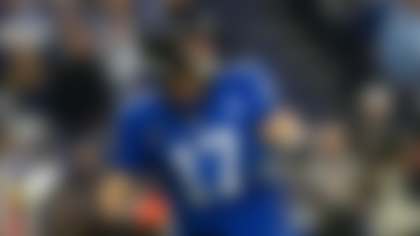By Bill Bradley, contributing editor
The chop block last Sunday against Arizona defensive end Calais Campbell was illegal because Denver Broncos tight end Ryan Clady made a "lure block" that allowed tight end Julius Thomas to take the Cardinals defender out at the knees, according to the NFL's vice president of officiating.
Dean Blandino, speaking during his weekly officiating video for the media, said the rule has been around since 1996 because it makes the defender a defenseless player.
"The concept was there prior to that," Blandino said. "(Clady) confronts (Campbell) in a pass-blocking posture, then the second offensive player (Thomas) cannot block the defender below the waist. That's what happens here.
"... (This play) actually violates a second provision on the rule, which is the reverse chop. In the classic chop, I engage the defender high, then my teammate cuts him below the waist. You can also have a reverse chop where the initial contact is low, and then the second contact is high. (Thomas) hits him low. (Clady) hits him high, puts the helmets, the hands on (Campbell)."
Blandino said the rule was properly penalized during the game, costing the Broncos 15 yards and wiping out a long touchdown pass. Also, Thomas was fined more than $8,268 for the illegal block, according to NFL Media Insider Ian Rapoport.
Another play that wiped a long touchdown pass was explained by Blandino. He said the referees properly called Seattle Seahawks guard James Carpenter's unnecessary roughness penalty after he illegally shoved a Washington Redskins defensive lineman, who was struck in the head after he already was pinned to the ground.
"You can finish that block if it's one continuous act," Blandino said. "He's going to drive that defender to the ground. He can put his hands on him to try to keep him down. He' can't get on top and hold the player, but he can push the player while he is on the ground.
"Once he separates and has this separate act of driving down onto the player in the head or neck area, that's a foul for unnecessary roughness."



